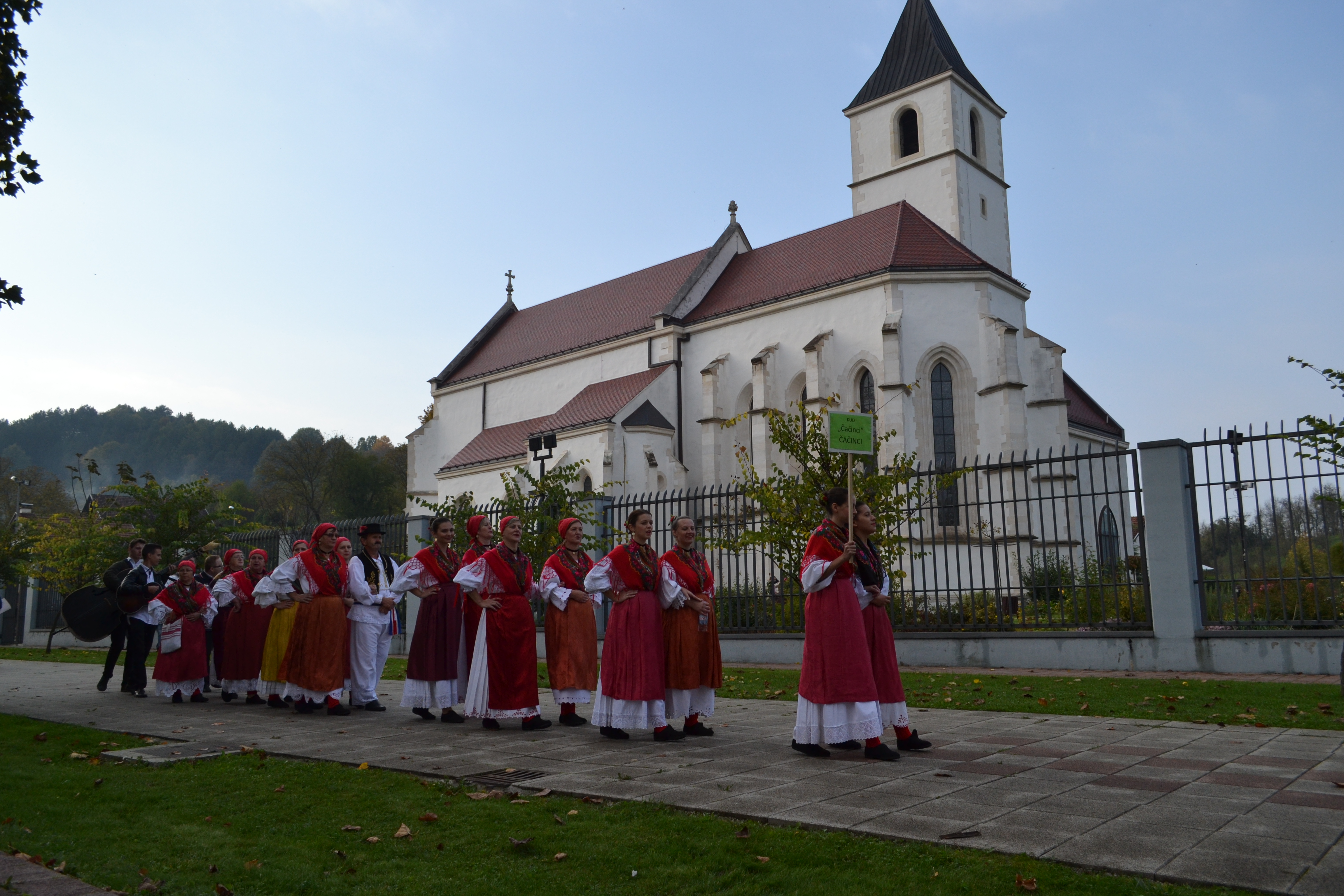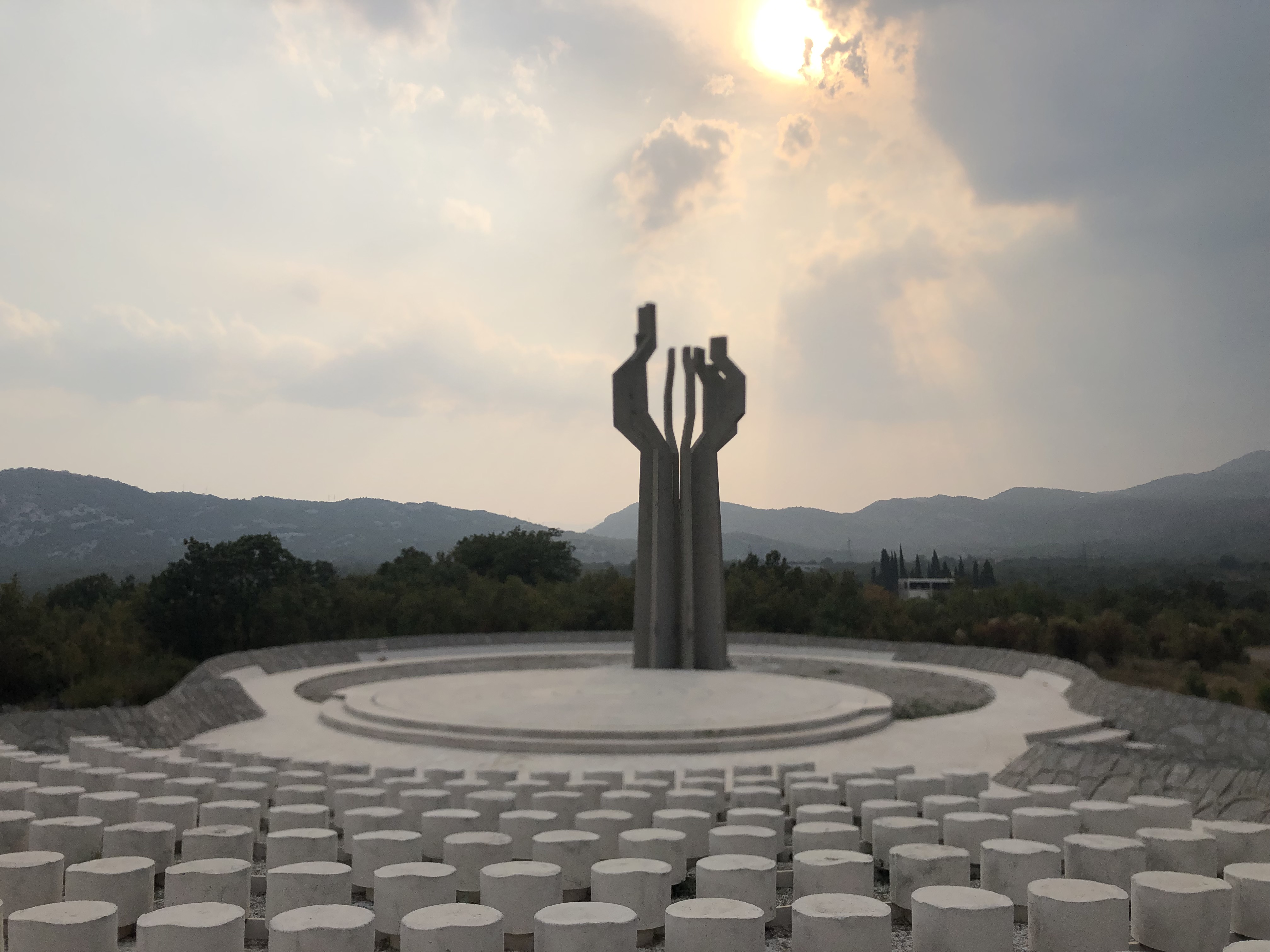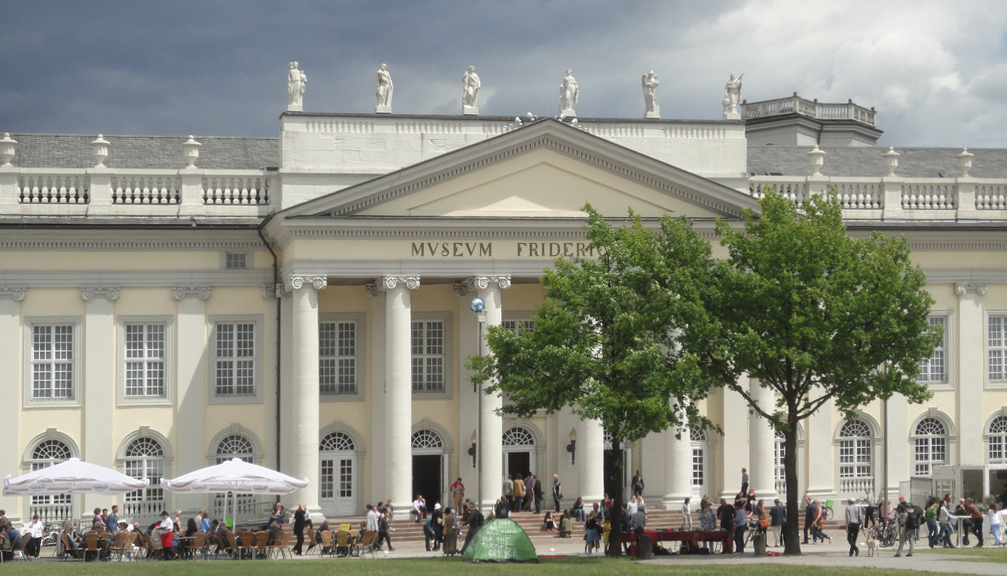|
Vojin Bakić
Vojin Bakić ( sr-cyrl, Војин Бакић; 5 June 1915 – 18 December 1992) was a prominent Yugoslav sculptor. Educated at the Zagreb Academy of Fine Arts and by Ivan Meštrović and Frano Kršinić, Bakić's early works were dominated by a figurative depiction of female nudity with reduced breasts and closed volumes. After 1945, he moved towards the impressionistic treatment of the surface with expressive transitions of light and shadow without superfluous details, which, according to him, represented the expression of the joy of life, flash, and light, something he shared with his contemporaries who wanted to create a better and more humane world in post-World War II Yugoslavia. He was at first influenced by the socialist realism, but later shifted towards modernism in the late 50s, embracing the challenges of an open form, interior spaces and light reflections, being among the first sculptors in Croatia that followed the program principles of geometric - in his case mostl ... [...More Info...] [...Related Items...] OR: [Wikipedia] [Google] [Baidu] |
Kamenska
Kamenska is an uninhabited village in Požega-Slavonia County, Croatia. Kamenska is administered as a part of the Brestovac municipality. The village is connected by the D38 state road. Demographics According to the 2011 census, the village of Kamenska is no longer inhabited. The 1991 census recorded that 92.50% of the village population were ethnic Serbs (37/40), 2.50% were ethnic Croats (1/40), and 5.00% were of other ethnic origin (2/40). Sights * Monument to the victory of the people of Slavonia Monument to the revolutionary victory of the people of Slavonia or Monument to the people-hero of Slavonia was a World War II memorial sculpture by Vojin Bakić, that was located in, now uninhabited, Serbian village of Kamenska, Brestovac, Slavo ... References Former populated places in Croatia Serb communities in Croatia {{PožegaSlavonia-geo-stub ... [...More Info...] [...Related Items...] OR: [Wikipedia] [Google] [Baidu] |
Monument To The Victory Of The People Of Slavonia
Monument to the revolutionary victory of the people of Slavonia or Monument to the people-hero of Slavonia was a World War II memorial sculpture by Vojin Bakić, that was located in, now uninhabited, Serbian village of Kamenska, Brestovac, Slavonia, Croatia. It was destroyed by the Armed Forces of Croatia in 1992. It was built over a decade, from 1957 to 1968. At the time of its opening it was the largest postmodern sculpture in the world. It was dedicated to the people of Slavonia during World War II and made of stainless steel. The opening ceremony was performed on 9 November 1968 and attended by Yugoslav president Josip Broz Tito. During the disintegration of Yugoslavia in 1991, the works of Vojin Bakić were on the "list" for monuments to be demolished. In 1992, an unprecedented culturicide occurred when, according to eyewitnesses, the commander of the 123rd Brigade of the Croatian Army, Major Miljenko Crnjac, ordered the demolition of the monument on February 21. The monume ... [...More Info...] [...Related Items...] OR: [Wikipedia] [Google] [Baidu] |
Vladimir Nazor Award
The Vladimir Nazor Award ( hr, Nagrada Vladimir Nazor) is a Croatian prize for arts and culture established in 1959 and awarded every year by the Ministry of Culture. Named after the writer Vladimir Nazor (1876–1949), the prize is awarded to Croatian artists for achievements in six different fields of art and culture, and in each category every year two separate prizes are awarded - one for life achievement (for overall contributions to their respective field), and another one, commonly referred to as the "annual award", for a single piece of outstanding work in the field created over the previous 12 months. The winners for the preceding year are usually announced around 19 June, the anniversary of Nazor's death, with prizes handed to recipients in an official ceremony usually held in July. List of Life Achievement Award winners Awards marked with † denote shared wins. Source: Architecture and urbanism * 1965 – Mladen Kauzlarić * 1966 – Juraj Denzler * 1967 – St ... [...More Info...] [...Related Items...] OR: [Wikipedia] [Google] [Baidu] |
Dotrščina Memorial Park
Dotrščina is a forest park in the northeast of Zagreb, Croatia. It is a protected area as the Dotrščina Memorial Cemetery and Park of the Revolution, because it is the historical site of mass executions in World War II. It is located north of the Maksimir forest park and south of the Medvednica mountain, and includes 365 cadastral acres (approx. 2 km2), mostly of forested area. History During the time of Zagreb in World War II, starting from May 1941, the Ustasha brought their victims here day and night, and killed them systematically. Victims were most often thrown into common pits, and therefore there is no insight into where anyone was buried. According to the latest research from 1985, it was estimated that around 7,000 anti-fascists were executed here, including around 2,000 members of the Communist Party of Yugoslavia and the League of Communist Youth of Yugoslavia. Some notable Croatian intelectualls who were executed here were Ivan Krndelj, Dr Božidar Adžija, ... [...More Info...] [...Related Items...] OR: [Wikipedia] [Google] [Baidu] |
Bačkovica
Bačkovica is a village in Croatia , image_flag = Flag of Croatia.svg , image_coat = Coat of arms of Croatia.svg , anthem = "Lijepa naša domovino"("Our Beautiful Homeland") , image_map = , map_caption = , capit .... Demographics According to the 2021 census, its population was 27. References Populated places in Bjelovar-Bilogora County {{BjelovarBilogora-geo-stub ... [...More Info...] [...Related Items...] OR: [Wikipedia] [Google] [Baidu] |
Voćin
Voćin is a village and municipality in western Slavonia, Croatia, located southwest of Slatina and east of Daruvar. The population of the municipality is 1,911, with 956 people living in Voćin itself (census 2021). Geography Voćin, a pilgrimage site, is located in a valley of the Voćinska Rijeka at the foot of Papuk Mountain. The surrounding area is notable for the Lisičine arboretum, the special Sekulinačke Planine forest vegetation reserve. History In the late 19th and early 20th century, Voćin was part of the Virovitica County of the Kingdom of Croatia-Slavonia. The church was destroyed during World War II and rebuilt in 1973. During the World War II, on January 14, 1942, happened the first Voćin massacre - killing of 350 Serb civilians by the Croatian Ustaše. The massacre was carried out as retaliation for partisans' action in Papuk. During the Croatian War of Independence, the village's was the site of a massacre by the Serb White Eagles, who killed 43 vill ... [...More Info...] [...Related Items...] OR: [Wikipedia] [Google] [Baidu] |
Yugoslav World War II Monuments And Memorials
The authorities of the Socialist Federal Republic of Yugoslavia established many World War II memorials during its existence. Several memorial sites were established between 1945 and 1960, though widespread building started after the founding of the Non-Aligned Movement. Yugoslav president Josip Broz Tito commissioned several memorial sites and monuments in the 1960s and 1970s dedicated to World War II battles, and Nazi concentration camp sites. They were designed by notable sculptors, including Dušan Džamonja, Vojin Bakić, Miodrag Živković, Jordan and Iskra Grabul, and architects, including Bogdan Bogdanović and Gradimir Medaković. After Tito's death, a small number were built, and the monuments were popular visitor attractions in the 1980s as patriotic sites, and since the Yugoslav Wars and the dissolution of Yugoslavia, the sites are mostly abandoned. In Slovenia, World War II Veteran Organisation and its branches yearly hold many commemorative events in regard with th ... [...More Info...] [...Related Items...] OR: [Wikipedia] [Google] [Baidu] |
Aleksandar Srnec
Aleksandar Srnec (30 July 1924 – 27 March 2010) was a Croatian artist. He is mainly known for his avant-garde designs and kinetic and lumino kinetic art. Srnec was one of the founding members of the Exat 51 group whose active members between 1950 and 1956 were the architects Vjenceslav Richter, Bernardo Bernardi, Zdravko Bregovac, Božidar Rašica and Vladimir Zaharović and the painters Vlado Kristl and Ivan Picelj. He made abstract art based on the use of geometric shapes. In 1953, he designed his first kinetic objects entitled, ''Space Modulator'', while in 1956, he began his experiments with moving sculptures and reliefs. In the 1960s, Srnec participated in the ''New Tendencies'' exhibitions. From 1962, he became involved with luminal-kinetic experiments, for example ''Luminoplastic I'', and from 1968, he began making "ambience art". His work entitled ''Luminoplastic Ambience'', exhibited in 1967, in Gallery SC, (Student Centre Gallery) in Zagreb, was the first luminal-kinet ... [...More Info...] [...Related Items...] OR: [Wikipedia] [Google] [Baidu] |
Ivan Picelj
Ivan Picelj (28 July 1924 – 22 February 2011) was a contemporary Croatian painter, sculptor and graphic designer. Picelj developed a specific variation of geometric abstraction in Croatian painting by using primary colours and by reducing the shapes to geometric elements. He made sculptures and reliefs in wood and in metal (since 1957). The multiplication of the basic plastic unit within a regular grid is one of his trademark procedures. He was one of the founders and members of the group EXAT 51 which, in the period 1950–1956, consisted of the architects Vjenceslav Richter, Bernardo Bernardi, Zdravko Bregovac, Božidar Rašica and Vladimir Zaharović, and the painters Vlado Kristl and Aleksandar Srnec. He was also a member of the Industrial Design Studio – SIO (1956). He is one of the founders of the New Tendencies movement, and he participated in the production and exhibited at the ''New Tendencies'' exhibitions in Zagreb (1961–67). He spent a lot of time in Paris where ... [...More Info...] [...Related Items...] OR: [Wikipedia] [Google] [Baidu] |
Documenta
''documenta'' is an exhibition of contemporary art which takes place every five years in Kassel, Germany. The ''documenta'' was founded by artist, teacher and curator Arnold Bode in 1955 as part of the Bundesgartenschau (Federal Horticultural Show) which took place in Kassel at that time. It was an attempt to bring Germany up to speed with modern art, both banishing and repressing the cultural darkness of Nazism. This first ''documenta'' featured many artists who are generally considered to have had a significant influence on modern art (such as Picasso and Kandinsky). The more recent editions of the event feature artists based across the world, but much of the art is site-specific. Every ''documenta'' is limited to 100 days of exhibition, which is why it is often referred to as the "museum of 100 days". ''Documenta'' is not a selling exhibition. Etymology of ''documenta'' The name of the exhibition is an invented word. The term is supposed to demonstrate the intention of ... [...More Info...] [...Related Items...] OR: [Wikipedia] [Google] [Baidu] |
Milan Triennial XI
The Milan Triennial XI was the Triennial in Milan of 1957 sanctioned by the Bureau of International Expositions (BIE). Its theme was ''Improving the Quality of Expression in Today’s Civilisation''. Contents There was a survey of sculpture of the previous 50 years, showing works by Umberto Boccioni, Constantin Brâncuși, Alexander Calder, Arturo Martini, Henri Matisse, Henry Moore, Pablo Picasso, Pierre-Auguste Renoir and Auguste Rodin. Gillo Dorfles, Leonardo Ricci, Luigi Rosselli and Marco Zanuso organised an industrial product exhibition. And an architecture section. Timo Sarpaneva won 2 Grand Prix, Kaj Franck and Dora Jung one each. Antti Nurmesniemi, Yki Nummi, Ilmari Tapiovaara, Vuokko Eskolin, Bertel Gardberg and Sori Yanagi won gold medals, Yanagi's for his butterfly stool. Saara Hopea won a silver medal for her flamingo liqueur glasswork. The USA pavilion was designed by Walter Dorwin Teague Walter Dorwin Teague (December 18, 1883 – December 5, 1960) was ... [...More Info...] [...Related Items...] OR: [Wikipedia] [Google] [Baidu] |
Alexandria Biennial
Alexandria ( or ; ar, ٱلْإِسْكَنْدَرِيَّةُ ; grc-gre, Αλεξάνδρεια, Alexándria) is the second largest city in Egypt, and the List of coastal settlements of the Mediterranean Sea, largest city on the Mediterranean coast. Founded in by Alexander the Great, Alexandria grew rapidly and became a major centre of Hellenic civilisation, eventually replacing Memphis, Egypt, Memphis, in present-day Greater Cairo, as Egypt's capital. During the Hellenistic period, it was home to the Lighthouse of Alexandria, which ranked among the Seven Wonders of the Ancient World, as well as the storied Library of Alexandria. Today, the library is reincarnated in the disc-shaped, ultramodern Bibliotheca Alexandrina. Its 15th-century seafront Qaitbay citadel, Qaitbay Citadel is now a museum. Called the "Bride of the Mediterranean" by locals, Alexandria is a popular tourist destination and an important industrial centre due to its natural gas and petroleum, oil pipeline trans ... [...More Info...] [...Related Items...] OR: [Wikipedia] [Google] [Baidu] |





